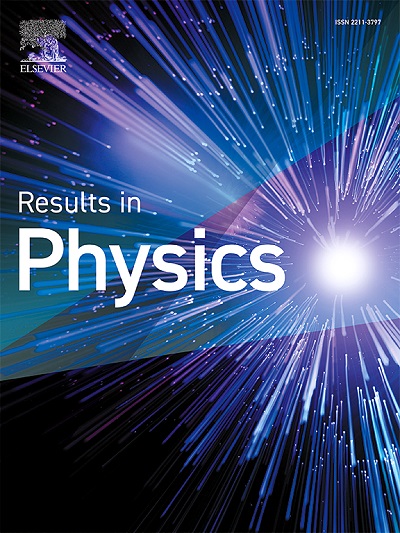Nonlinear drift waves and their role in Saturn’s B-ring: implications of rotation-induced dispersive dust drift waves and plasma parameter effects on spokes
IF 4.6
2区 物理与天体物理
Q2 MATERIALS SCIENCE, MULTIDISCIPLINARY
引用次数: 0
Abstract
Both linear and nonlinear dispersive dust drift waves are investigated in a magnetized, rotating plasma in the presence of Cairns and kappa-distributed ions by using the two fluid model. In the linear regime, dispersion relation is obtained. In the nonlinear regime, nonlinear partial differential equation (NLPDE) is solved to obtain the exact solitary solution by using the functional variable method. Parameters of Saturn’s B-ring are used for the graphical analysis. Graphical illustrations show that the solved NLPDE admits both compressive and rarefactive solitary solution depending on the velocity of the solitary structure. 3-D representation of compressive and rarefactive solitary structuresd appear as the spokes like structures (dark and bright, respectively) which are wider at the base and become narrower as the radial distance increases. This observation further supports the hypothesis that nonlinear drift waves may indeed correspond to the spokes observed in Saturn’s B-ring. It is noted that bright and dark spokes exhibit distinct behaviors in response to variations in the plasma parameters. By applying plasma parameters typical of those found in Saturn’s B-ring, it is demonstrated that the theoretically predicted spatiotemporal scale lengths align closely with the observations of the spokes made by various space missions and the Hubble Space Telescope (HST).
非线性漂移波及其在土星b环中的作用:旋转诱导的色散尘埃漂移波和等离子体参数对辐条的影响
本文采用两种流体模型研究了磁化旋转等离子体中凯恩斯和卡帕分布离子存在下的线性和非线性色散尘埃漂移波。在线性状态下,得到色散关系。在非线性区域,利用泛函变量法求解非线性偏微分方程,得到精确孤立解。利用土星b环的参数进行图形分析。图解表明,根据孤立结构的速度,所解的NLPDE既有压缩解,也有稀疏解。压缩和屈光孤立结构的三维表现为辐条状结构(分别为深色和明亮),它们在底部变宽,随着径向距离的增加而变窄。这一观测结果进一步支持了非线性漂移波可能确实与在土星b环观测到的辐条相对应的假设。值得注意的是,亮辐和暗辐在响应等离子体参数的变化时表现出不同的行为。通过应用在土星b环中发现的典型等离子体参数,证明了理论预测的时空尺度长度与各种太空任务和哈勃太空望远镜(HST)对辐条的观测结果密切一致。
本文章由计算机程序翻译,如有差异,请以英文原文为准。
求助全文
约1分钟内获得全文
求助全文
来源期刊

Results in Physics
MATERIALS SCIENCE, MULTIDISCIPLINARYPHYSIC-PHYSICS, MULTIDISCIPLINARY
CiteScore
8.70
自引率
9.40%
发文量
754
审稿时长
50 days
期刊介绍:
Results in Physics is an open access journal offering authors the opportunity to publish in all fundamental and interdisciplinary areas of physics, materials science, and applied physics. Papers of a theoretical, computational, and experimental nature are all welcome. Results in Physics accepts papers that are scientifically sound, technically correct and provide valuable new knowledge to the physics community. Topics such as three-dimensional flow and magnetohydrodynamics are not within the scope of Results in Physics.
Results in Physics welcomes three types of papers:
1. Full research papers
2. Microarticles: very short papers, no longer than two pages. They may consist of a single, but well-described piece of information, such as:
- Data and/or a plot plus a description
- Description of a new method or instrumentation
- Negative results
- Concept or design study
3. Letters to the Editor: Letters discussing a recent article published in Results in Physics are welcome. These are objective, constructive, or educational critiques of papers published in Results in Physics. Accepted letters will be sent to the author of the original paper for a response. Each letter and response is published together. Letters should be received within 8 weeks of the article''s publication. They should not exceed 750 words of text and 10 references.
 求助内容:
求助内容: 应助结果提醒方式:
应助结果提醒方式:


